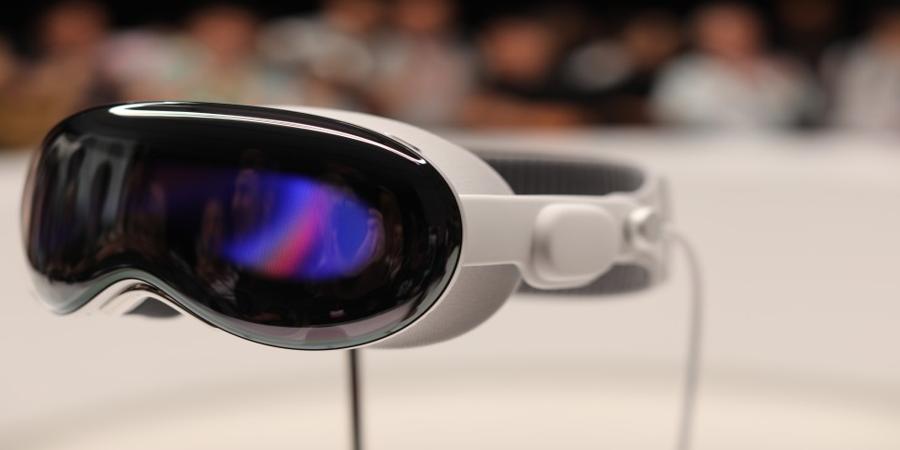We’ve never met. We’ve never talked. And still, I feel confident telling you that the Vision Pro isn’t for you. At the end of the day, it’s an odds game. You’re most people, and it’s therefore not for you.
If you know one thing about the headset, it’s probably the fact that it’s $3,500. When the one thing most people know about a product is its price, that product is almost certainly prohibitively expensive. The Vision Pro certainly is.
It’s a fact everyone in the media (ourselves certainly included) ran with. Apple is a consumer company that makes consumer products for consumers. Sure, the company has been known for its premium pricing for several decades now, but $3,500 isn’t a consumer price. The Vision Pro isn’t a consumer product.
You’d be forgiven for thinking otherwise in the lead up to the event. Apple uses its global stage at events like this to debut such things. You no doubt heard that the company was readying its next major product category, with Meta and HTC firmly in its sites. Yesterday’s presentation only fueled those ideas. The product ads largely centered around people wearing the Vision Pro in their homes.
Something that gets lost in the headlines is the “D” part of WWDC. Like Google I/O and Microsoft Build, this is an event firmly focused on developers. The first keynote was followed by a “Developers State of the Union,” and the remainder of the week is devoted to sessions for iOS, macOS and the like. And while other products (like the new MacBook Air) are for most of us, the Vision Pro really isn’t. In fact, it’s probably best to think about this as a developer device for the time being.
This isn’t something Apple does a lot. And when it does, it generally doesn’t frame the product as more general purpose. The closest analogy of recent vintage is the Mac Mini it released specifically for developers to start building for the upcoming M1 chip. You can only develop so much content through secret partnerships. You’ll need a lot more than that if you’re going to launch an App Store.
“Pro” is also an operative word in all of this. It’s true the word has lost some meaning with the currently lineup. Are AirPods Pro more professional than the regular models? Or are they just more expensive and better? Pro here, however, implies something else. This is the $3,500 unit for developers and businesses. This is the first device released after seven to eight years of development. It’s the admittedly overengineered device that maybe isn’t entirely confident about market fit.
It’s a device that will launch with Disney+, sure, but the gaming experience is currently wanting. Apple is promising something akin to playing on a big screen TV, rather than a bespoke AR/VR solution. It’s those experiences, rather than existing app ports, that this platform needs. But Pro implies the existence (or at least future existence) of a non-Pro headset. Unfortunately, while such a device has been long-rumored, we almost certainly won’t see it until late 2024 at the earliest.
So Apple finds itself in a tough spot. After seven years of development, shareholders are pushing the company to ship a product. They’re also no doubt pushing the company to position this as something more than a developer kit ahead of an eventual consumer-focused product. Suddenly Apple finds itself launching a “spatial computing” device in front of millions, bolstered by well-produced spots with ELO songs that might as well be iPhone ads.
Apple is also getting it in front of select reporters. Matthew tried it out yesterday. The emerging consensus is to be expected: This thing is neater and works better than expected, but I’m still not sure who — or what — it’s for. People will read that and get more interested, but very few will be $3,500 interested. It’s a big leap of faith to take for what purports to be a new computing paradigm. Of course, that’s going to continue to be an issue, even if the non-Pro version comes in at a fraction of the price. Demos in Apple Stores could help, but a critical mass will be difficult, even for someone with the track record and reach of an Apple.
The enterprise market continues to be an interesting one. In the lead up to the event, it was hard to imagine Apple leading with that pitch — and naturally it didn’t. But Magic Leap, HTC and Meta have all realized in a very public way that enterprise is where the money is and have wholly or partly pivoted in that direction. The applications are there and the pockets tend to be much deeper.
The reaction in the crowd was audible when the price was announced. It’s hard to shake the feeling that the company misplayed its hand somewhat by 1) Positioning it toward consumers and 2) Not having a cheaper version in the wings. But it’s also easy to see how its hands may have been tied by both shareholders and expectations. Ultimately, it’s hoping the interest/excitement will get it to where it needs to be.
For decades we’ve been hearing about Apple’s Reality Distortion Field. A mixed reality headset is an almost literal manifestation of such a concept. It’s one that has to be experienced to be believed, however, and it’s going to take a lot of work, time, more content, new framing and eventually lower pricing to ensure that more users can have that experience.
Source @TechCrunch



